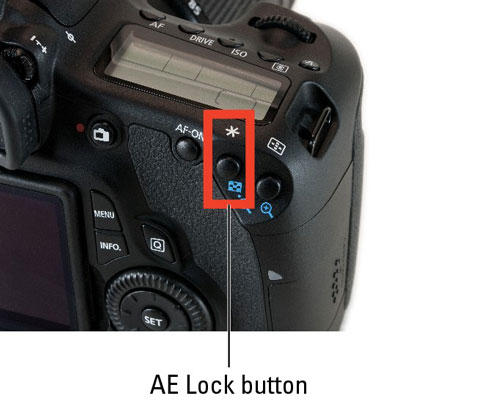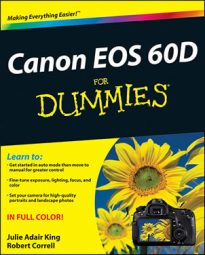To help ensure a proper exposure, your Canon EOS 60D continually meters the light until the moment you press the shutter button fully to shoot the picture. In autoexposure modes (that is, any mode but B and M), it also keeps adjusting exposure settings as needed.
For most situations, this approach works great, resulting in the right settings for the light that’s striking your subject when you capture the image. You may want to lock in a certain combination of exposure settings, though. Here’s one such scenario: Suppose that you’re shooting several images of a large landscape that you want to join into a panorama in your photo editor. Unless the lighting is even across the entire landscape, the camera’s autoexposure brain will select different exposure settings for each shot, depending on which part of the scene is in the frame. That can lead to weird breaks in the brightness and contrast of the image when you stitch the image together. And, if it’s the f-stop that’s adjusted, which is what could happen in P or Tv exposure modes, you may notice shifts in depth of field as well because the aperture setting affects that aspect of your pictures.
The easiest way to lock in exposure settings is to switch to M (manual exposure) mode and use the same f-stop, shutter speed, and ISO settings for each shot. In manual exposure mode, the camera never overrides your exposure decisions; they’re locked until you change them.
But if you prefer to stay in P, Tv, or Av mode, you can lock the current autoexposure settings. Here’s how to do it for still photography:
Press the shutter button halfway.
If you’re using autofocusing, focus is locked at this point.
Press the AE Lock button.
AE stands for autoexposure.
Exposure is now locked and remains locked for 4 seconds, even if you release the AE Lock button and the shutter button. To remind you that AE Lock is in force, the camera displays a little asterisk in the viewfinder. If you need to relock exposure, just press the AE Lock button again.

Note: If your goal is to use the same exposure settings for multiple shots, you must keep the AE Lock button pressed during the entire series of pictures. Every time you let up on the button and press it again, you lock exposure anew based on the light that’s in the frame.

